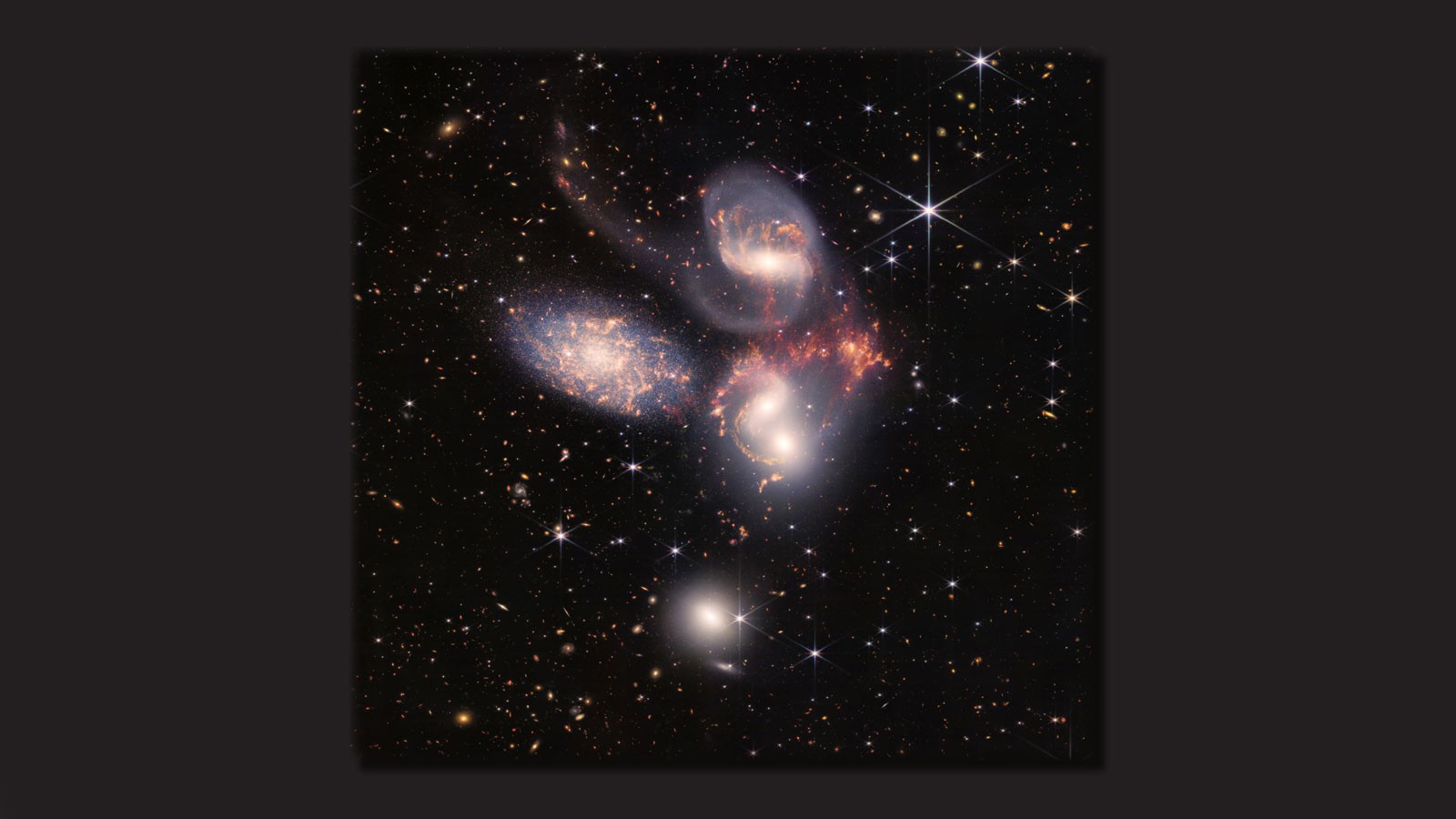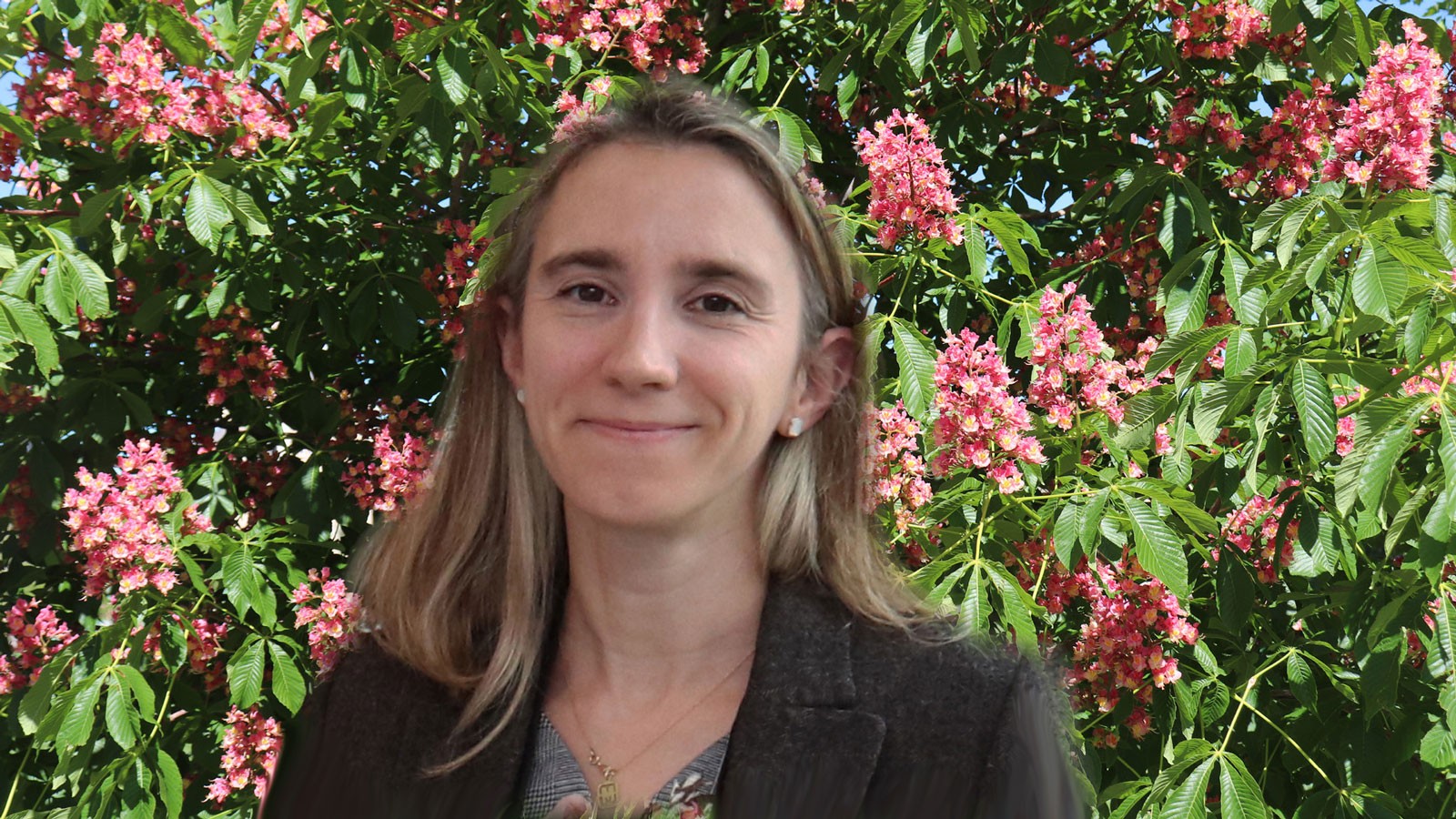James Webb Space Telescope Sheds Light on Black Holes, Says USU Physicist
Maria Rodriguez says emerging images may unlock mysteries of black hole formation
By Mary-Ann Muffoletto |
An image of Stephan's Quintet from the James Webb Space Telescope, released July 12, 2022, reveals new details about galactic mergers and interactions. Such images will shed light on dark holes, says USU physicist Maria Rodriguez. (Courtesy NASA, STScl)
In popular banter, black holes are considered vast voids of unrecoverable mystery, from which objects, time, money, experiences, knowledge or memories can never be retrieved. Yet the “holes” are actually a great amount of matter packed into a very small area, says Utah State University theoretical physicist Maria Rodriguez. And images emerging this summer from the James Webb Space Telescope, she says, are shedding new light on these enigmatic cosmic phenomena.
“For me, the images from James Webb are a milestone for humanity,” says Rodriguez, associate professor in USU’s Department of Physics. “These images reveal details about our cosmos that will help us shape the future of gravitational physics.”
Black holes, astronomical objects with a gravitational pull so strong even light can’t escape, are typically formed from the remnants of a large star that dies in a supernova explosion. Rodriguez says black holes are flooding the universe, and some of them emit powerful jets and can collide to become bigger black objects.
“Already, James Webb has captured an array of not only two, but five black holes — a quintet — with unprecedented precision,” she says. “These images may potentially unveil how the black holes clustered in the early universe and how they merged. This new information could decipher the mystery behind black hole jets.”
In addition data coming from the JWST, Rodriguez has closely followed discoveries by investigators associated with the LIGO (Laser Interferometer Gravitational-Wave Observatory) Scientific Collaboration, which has facilities in Livingston, Louisiana, and Hanford, Washington, that first detected gravitational waves emanating from a black hole collision in September 2015, as well as the Event Horizon Telescope, or EHT, which captured an image of the supermassive black hole at the center of our Milky Way galaxy in 2022.
“Einstein predicted gravitational waves about a hundred years before they were detected in 2015, and scientists were able to convert those phenomena into sound waves we could hear,” says Rodriguez, who has published multiple peer-reviewed papers about black holes, quantum gravity and an understanding of space-time. “It’s very exciting that we have these technological developments that will enhance our understanding of celestial bodies we’ve long studied but never seen.”
Rodriguez was recently featured in interviews with Utah Public Radio, in which she discussed the implications of the JWST’s discoveries for black hole research, as well as her observations, as a Latina, about challenges facing women scientists and scientists from other underrepresented groups.
“This is a golden age for scientists and astrophysicists, as years of developing technologies are finally coming together,” she says. “I encourage students to take advantage of the exciting research opportunities created by these technologies.”
Theoretical physicist Maria Rodriguez, associate professor in USU's Department of Physics, has long studied black holes, quantum gravity and understanding of space-time, and explores ideas of white holes and wormholes. (Photo credit USU/M. Muffoletto)
WRITER
Mary-Ann Muffoletto
Public Relations Specialist
College of Science
435-797-3517
maryann.muffoletto@usu.edu
CONTACT
Maria Rodriguez
Associate Professor
Department of Physics
435-797-8838
maria.rodriguez@usu.edu
TOPICS
STEM 158stories Space 139stories Physics 99stories Satellites 67storiesComments and questions regarding this article may be directed to the contact person listed on this page.









